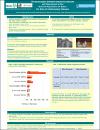The association between Insomnia Disorder and Depression in the General Population of Qatar: the Role of Inflammatory Disease
| المؤلف | Khaled, Salma Mawfek |
| المؤلف | Petcu, Catalina Gabriela |
| المؤلف | Al-Thani, Maryam Ali |
| المؤلف | Al-Hamadi, Aisha Mohammed |
| المؤلف | Woodruff, Peter |
| تاريخ الإتاحة | 2020-10-26T08:49:52Z |
| تاريخ النشر | 2020 |
| اسم المنشور | Qatar University Annual Research an Exhibition 2020 (quarfe) |
| الاقتباس | Khaled S.M., Petcu C.G., AlThani M.A, AlHamadi A.M., Woodruff P., " The association between Insomnia Disorder and Depression in the General Population of Qatar: the Role of Inflammatory Disease", Qatar University Annual Research Forum and Exhibition (QUARFE 2020), Doha, 2020, https://doi.org/10.29117/quarfe.2020.0131 |
| الملخص | Background: There is emerging evidence that supports a role for inflammatory processes and insomnia in the pathophysiology of depression. However, little is known about the role of inflammation in depression and insomnia in non-clinical populations. Aims: We aimed to estimate the association between inflammatory illness, depression and insomnia in the Qatari population. We hypothesized that inflammatory illness would be associated with sub-clinical depression and insomnia in the Qatari population. Methods: We used probability-based sampling on a representative sample (N= 1,611) of Qatar's adult household population. Face-to-face interviews were conducted using computer-assisted technology as part of the SESRI's annual omnibus survey in 2019. We used the Espie's (2014) Sleep Condition Indicator, to assess insomnia symptoms, and PHQ-9 and GAD-2 for subthreshold depression (SUBD), major depressive disorder (MDD), and anxiety. Health information including personal and family history of inflammatory disease were also collected. Univariate, bivariate, and multivariate statistics were conducted. Results: Among those with no inflammatory disease, the 30-day prevalence of subthreshold and major depression in those with insomnia disorder compared to those without insomnia was (SUBD: 5.3% vs 2.9%; MDD: 7.2% vs 0.6%, P<0.001), respectively. In contrast, among respondents with inflammatory disease, the prevalence of subthreshold and major depression in those with insomnia compared to those without insomnia was (SUBD: 11.8% vs 3.6%; MDD: 17% vs 1.7%, P<0.001), respectively. In crude (adjusted for age, gender, and household type) models with depression as a dependent variable, a statistically significant association between SUBD and insomnia was found (OR=4.2, P<0.01), while much stronger association was found between major depression and insomnia (OR=20.4, P<0.001). Conclusions:These findings highlight the possible impact of inflammatory disease on mental health in the otherwise healthy population of Qatar. |
| اللغة | en |
| الناشر | Qatar University Press |
| الموضوع | Insomnia disorder Depression Inflammatory Disease Qatar |
| النوع | Poster |
الملفات في هذه التسجيلة
هذه التسجيلة تظهر في المجموعات التالية
-
Theme 2: Population, Health & Wellness [118 items ]


